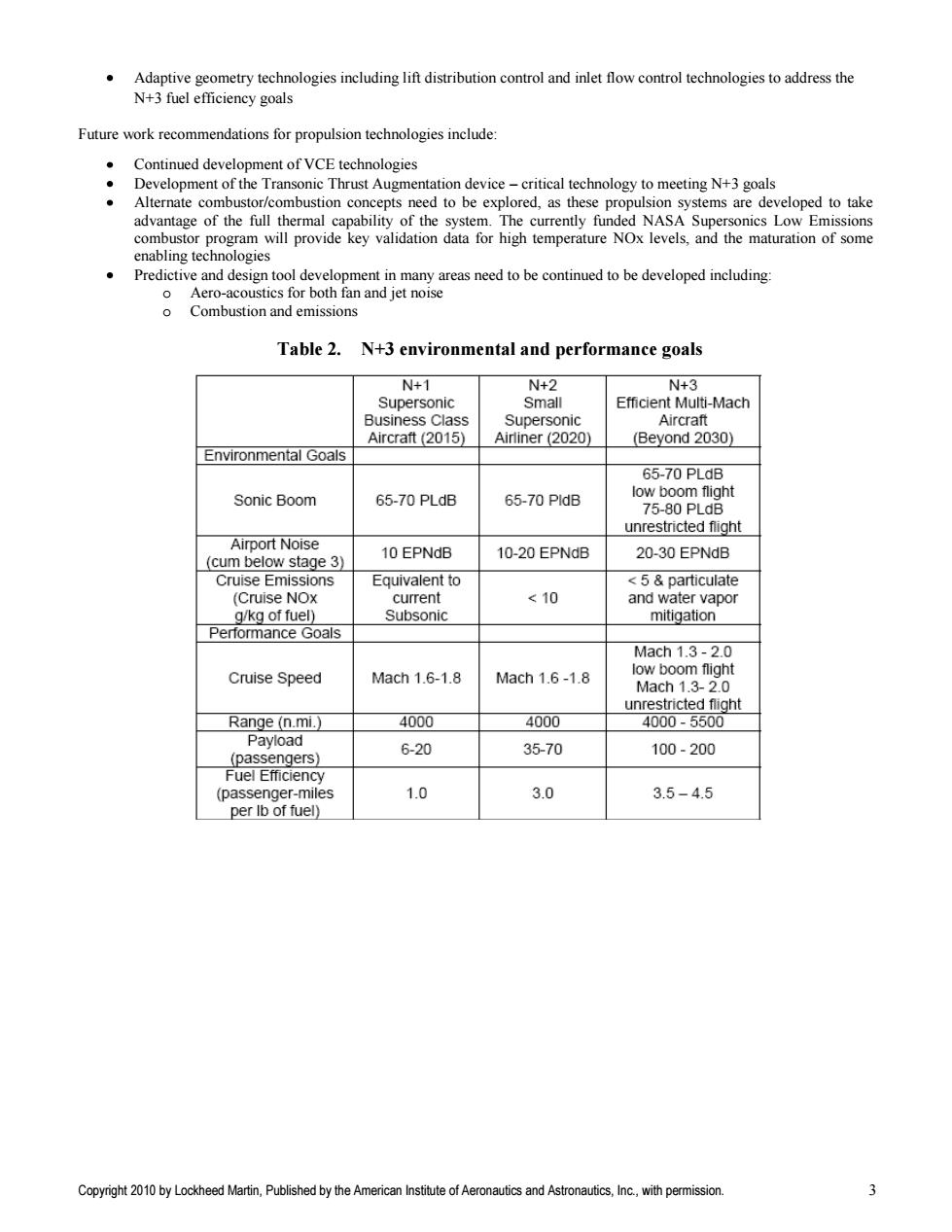正在加载图片...

Adaptive geometry technologies including lift distribution control and inlet flow control technologies to address the N+3 fuel efficiency goals Future work recommendations for propulsion technologies include: Continued development of VCE technologies Development of the Transonic Thrust Augmentation device-critical technology to meeting N+3 goals ● Alternate combustor/combustion concepts need to be explored,as these propulsion systems are developed to take advantage of the full thermal capability of the system.The currently funded NASA Supersonics Low Emissions combustor program will provide key validation data for high temperature NOx levels,and the maturation of some enabling technologies Predictive and design tool development in many areas need to be continued to be developed including: o Aero-acoustics for both fan and jet noise 0 Combustion and emissions Table 2.N+3 environmental and performance goals N+1 N+2 N+3 Supersonic Small Efficient Multi-Mach Business Class Supersonic Aircraft Aircraft(2015) Airliner(2020) (Beyond 2030) Environmental Goals 65-70 PLdB Sonic Boom 65-70 PLdB 65-70P1dB low boom flight 75-80 PLdB unrestricted flight Airport Noise (cum below stage 3) 10 EPNdB 10-20 EPNdB 20-30 EPNdB Cruise Emissions Equivalent to <5&particulate (Cruise NOx current <10 and water vapor g/kg of fuel) Subsonic mitigation Performance Goals Mach1.3-2.0 Mach1.6-1.8 Mach1.6-1.8 low boom flight Cruise Speed Mach1.3-2.0 unrestricted fight Range (n.mi.) 4000 4000 4000-5500 Payload (passengers) 6-20 35-70 100-200 Fuel Efficiency (passenger-miles 1.0 3.0 3.5-4.5 per Ib of fuel) Copyright 2010 by Lockheed Martin,Published by the American Institute of Aeronautics and Astronautics,Inc.,with permission. 3Copyright 2010 by Lockheed Martin, Published by the American Institute of Aeronautics and Astronautics, Inc., with permission. 3 Adaptive geometry technologies including lift distribution control and inlet flow control technologies to address the N+3 fuel efficiency goals Future work recommendations for propulsion technologies include: Continued development of VCE technologies Development of the Transonic Thrust Augmentation device – critical technology to meeting N+3 goals Alternate combustor/combustion concepts need to be explored, as these propulsion systems are developed to take advantage of the full thermal capability of the system. The currently funded NASA Supersonics Low Emissions combustor program will provide key validation data for high temperature NOx levels, and the maturation of some enabling technologies Predictive and design tool development in many areas need to be continued to be developed including: o Aero-acoustics for both fan and jet noise o Combustion and emissions Table 2. N+3 environmental and performance goals